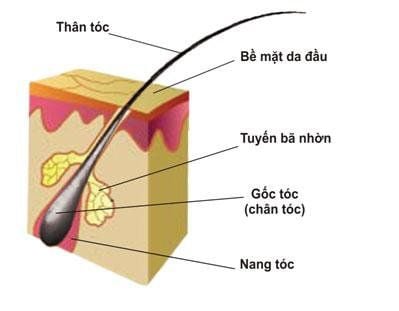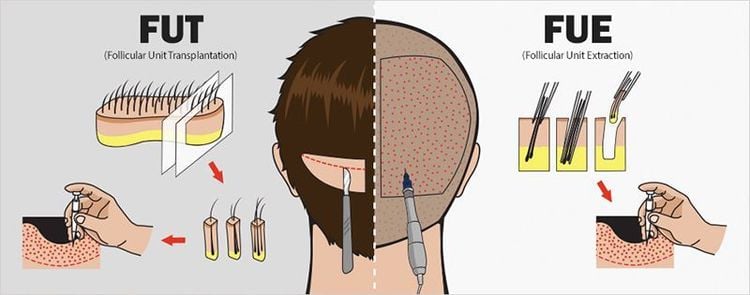This is an automatically translated article.
Written by Doctor Pham Hong Thai - Aesthetic Specialist - Aesthetic Center - General Surgery Department, Vinmec Times City International HospitalHair loss is a very common phenomenon because every day there is a certain amount of hair coming to the shedding cycle and also a corresponding amount of new hair is born to replace it. But if the phenomenon of hair loss occurs a lot, fast, continuously while the new hair does not have time to compensate, making your hair thinner and thinner, it is considered abnormal. Hair transplant is a solution but you need to understand this Method properly before deciding to do it.
1. Causes of hair loss
Hair consists of two parts: the hair shaft (the part that is visible on the outside of the scalp) and the hair follicle (the part that lies deep inside). The part of the follicle is responsible for reproduction so that the hair is continuously long (average 0.3 mm per day, approximately 1 cm per month. Each hair follicle has its own growth cycle, the average life cycle is 2-4 years. in men and 4-6 years in women.
In each hair follicle neck, there are sebaceous glands that always secrete an oily substance that both nourishes the hair follicle and moisturizes the scalp. Color characteristics (black, brown, red...) and shape (straight, curved) of hair are racial.
Hair loss has many causes and is divided into 2 groups: Reversible hair loss and irreversible hair loss. However, the causes of reversible hair loss that last long enough also become irreversible.
Classified by groups of influencing factors, there are several basic groups:
Physical factors: Effects of pulling hair, braiding too tightly, styling hair with heat... Chemical factors: Hair under the influence of chemicals from the outside (cleaning, dyes, straightening, curling ...), toxic chemicals from the inside (cancer drugs, heavy metal poisoning, drugs for chronic diseases count...). Biological factors: When you have scalp fungus, hair fungus, bacteria, parasites Acquired pathology: When you have syphilis, liver failure, lack of micronutrients (calcium, zinc .. .), anemia or blood loss, psoriasis, seborrheic dermatitis, Postpartum hair loss: Due to hormonal changes combined with blood loss, mineral loss Hair loss due to aging: The older you get, the less hair you lose Genetics: Straight inheritance (father to son) and cross inheritance (grandfather - mother - son). There are many studies that suggest that DHT (dihydrotestoterol) has a structure similar to male sex hormone (Testosterol) can cause a blockage in the nourishment of the hair follicles, causing hypoplasia of hair follicles, shortening the cycle of each hair follicle and making them disappear. completely. Hair loss usually has a whole process (only when poisoning or acute blood loss is large enough to lose acute hair), so recovery also needs a process. Depending on the cause, there will be different treatment options. One of the most effective methods today is a hair transplant.
2. Learn about the Hair Transplant method
A medical procedure that causes hair or hair to grow in areas of skin that were previously hairless. This procedure must be performed in a qualified medical facility. Up to this point, only autologous hair transplantation has had good results. Other forms of hair transplantation do not have evidence of success. The essence of the autologous hair transplant procedure is to redistribute hair on the same body, meaning that the doctor will move the patient's healthy hair follicles from one location to another. The hair donor area will be permanently lost, and whether the hair follicles that have moved away will survive in the new place depends on many factors.2.1. Hair transplant goals It is not possible to transplant the hair of one person to another: When a biological graft is inserted into another living organism, rejection (heterograft) will occur. People have to take anti-rejection drugs for the rest of their lives, but these drugs are the cause of hair loss.
Hair transplantation is not a solution to hair loss, meaning it does not correct the cause of hair loss. So if you do this trick when your hair is falling out or your scalp is sick, it will definitely fail. Therefore, the indication for hair transplant is a narrow indication that is not for all cases of hair loss. Your doctor needs to help you find the cause of your hair loss, and the sooner it is controlled, the better the chances of hair follicle recovery.
2.2. Hair transplant techniques

Please dial HOTLINE for more information or register for an appointment HERE. Download MyVinmec app to make appointments faster and to manage your bookings easily.














